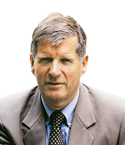Oil and gas in the capitals
Norway’s center-right government faces some fundamental issues concerning the country’s oil wealth. It is surprising the public by what it does not do, as well as by what it does do. On some accounts, it acts more like its center-left predecessor than like a conservative regime in economic policy.
Like other oil exporters, Norway’s petroleum industry and macro-economy have been hit by low oil prices. Unlike other oil exporters, apart from Abu Dhabi, Brunei, Kuwait and Qatar, Norway has a big sovereign wealth fund. The allegedly conservative Norwegian government has chosen not to improve terms for the petroleum industry, which is the country’s economic backbone. Instead, it will dip into the Fund to sustain economic activity. The effect is not to fight unemployment in the activities and regions most affected, but instead to increase the public sector share of employment and of the economy, as a whole.
Odd choices. It could be argued that a truly conservative government would have made the opposite choices, i.e. improve petroleum industry conditions and avoid an expansive financial policy. Moreover, monetary policy is also expansive, lowering interest rates and contributing to currency depreciation. This meets a specific industrial problem with general economic tools. The outcome may turn out to be inflation, at least partly neutralizing the effects of a lower exchange rate on industrial competitiveness, together with an expanding public sector, financed by the Fund.
In the 2016 budget, the government intends to cut the corporate income tax by several percent, but it will raise the special tax on the petroleum industry. In the end, there will be no change. Norway’s offshore petroleum industry is subject to a special tax regime, where oil companies can deduct 90% of capital investment, but are taxed on 78% of net profits. The result is a perverse incentive structure, not encouraging cost consciousness at the investment stage.
Fund transfers. Critical to the 2016 Norwegian budget is not the direct use of petroleum revenues, but the indirect use, through transfers from the Fund. Channelling petroleum revenues to the Fund shelters the public budget from the vagaries of oil and gas prices. At the time of writing, the Fund is valued at NOK 7,424 billion, or EUR 791.1 billion, or US$857.1 billion. By comparison, Norway’s gross domestic product (GDP) for 2015 is estimated at $359.7 billion, including the petroleum sector, and $301.3 billion, excluding petroleum activities. Hence, the Fund represents more than twice Norway’s total GDP and almost three times the GDP outside the petroleum industry.
There is a temptation to dig into the Fund to compensate for falling oil and gas income. Since the early 1990s, Fund transfers have been subject to the “rule of action,” limiting the outtake to 4% of Fund value, corresponding to the normal return on capital, with the intention to create a perpetual money-making machine away from the risks of oil and gas markets. Until now, that may have been achieved, but success is precarious. The Fund’s perpetuity as a money machine depends on the out-take remaining less than the input. Key is the “petroleum-corrected budget deficit” that is covered by Fund outtake. Lower petroleum revenues going into the Fund, therefore, require a compensation in investment income. In principle, this helps to discipline Norwegian financial policy.
Until 2014, the machine worked well. In preceding years, the budget deficit had been around 5% of the non-petroleum Norwegian economy. In 2014, it rose to 5.8% and, for 2015, the estimate is 6.4%. For 2016, the ambition is to keep the level constant. Therefore, an estimated GDP increase of 1.3% for non-petroleum Norway, and in public expenditure of 2.7%, will mean more money out of the Fund to the budget. Measured in current money, the petroleum-corrected deficit will increase 16% in 2016, to reach a level more than twice as high as in 2012.
Industry investment. Governmental revenue outside the petroleum sector increased almost 3%, but total petroleum revenue declined almost 6%. By contrast, direct state involvement is set to be more lucrative. The bottom line is that governmental revenue, in total, will increase 1% in 2016.
Lower oil prices and higher transfers to the budget mean that the Fund will grow less than in the past, but it nevertheless will continue to grow. From 2014 to 2015, total Fund income fell 13%; it is estimated to increase slightly in 2016. The clue is investment income, which rose 22% from 2014 to 2015, and which is estimated to grow 9% in 2016. By contrast, net petroleum income fell 30% from 2014 to 2015, and may fall another 6% during 2016. This figure masks a nearly quarter decline, from $4.4 billion to $3.3 billion, in the state’s direct petroleum investment. The Fund expenditure, transfer to the budget, increased 15% in 2015, and should continue in 2016. Consequently, the surplus will fall another 11% in 2016, after declining 27% in 2015. However, the Fund does not shrink—it grows 9% in 2015 and an estimated 6% next year.
The temptation is to use the money just to maintain living standards and social services, and to spend ever more from the Fund, avoiding tax increases. A tentative conclusion is that Norway will need more petroleum industry investment to secure future income and, therefore, will have to improve the terms. A center-left government may be needed to take such measures. In the meantime, low oil prices are transforming Statoil into a huge risk for the Norwegian economy and a difficult problem for any government. Statoil is borrowing and selling assets to finance dividends, bolstering the stock value and senior management bonuses, while cutting investment. This should not go on in a company that is 70% government-owned, and that has been endowed with major assets by the governmental owner. ![]()



